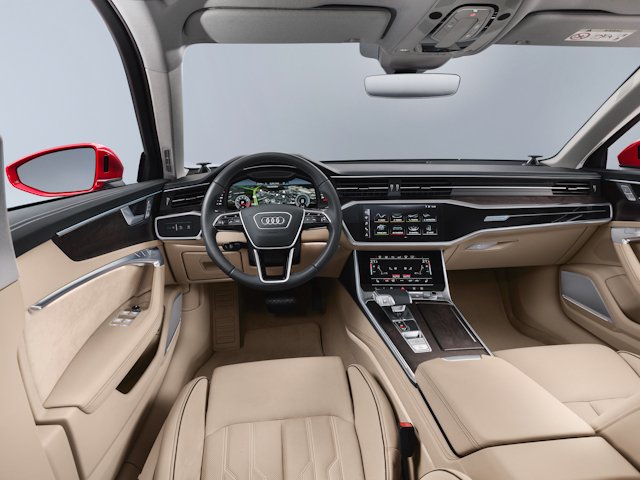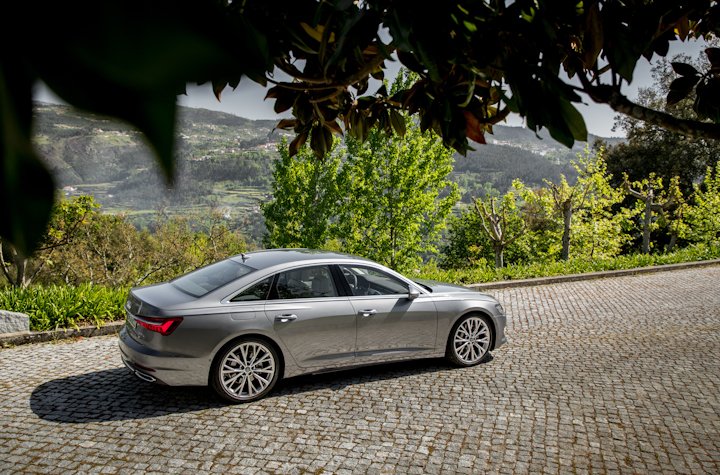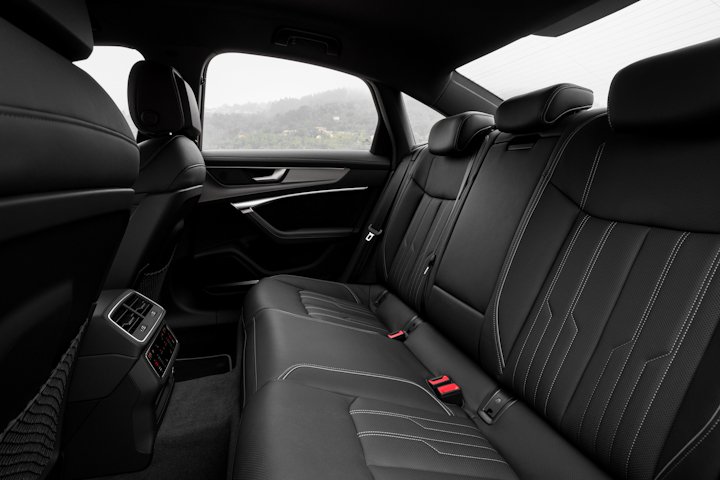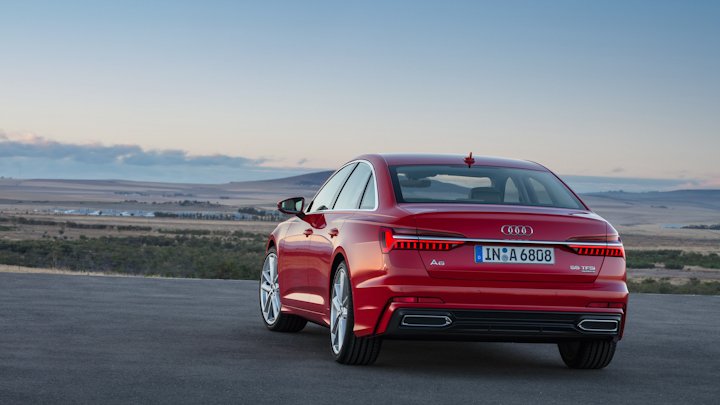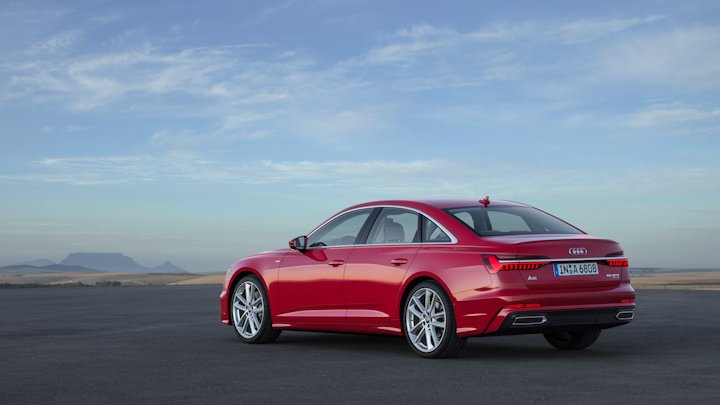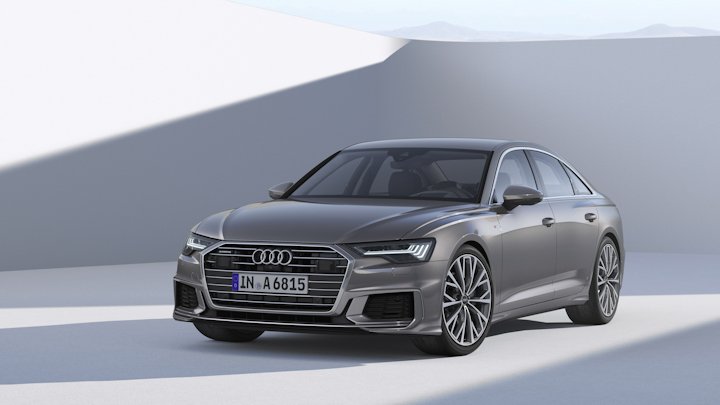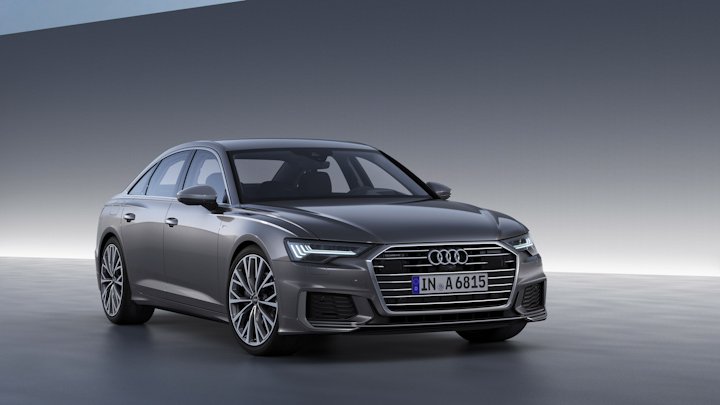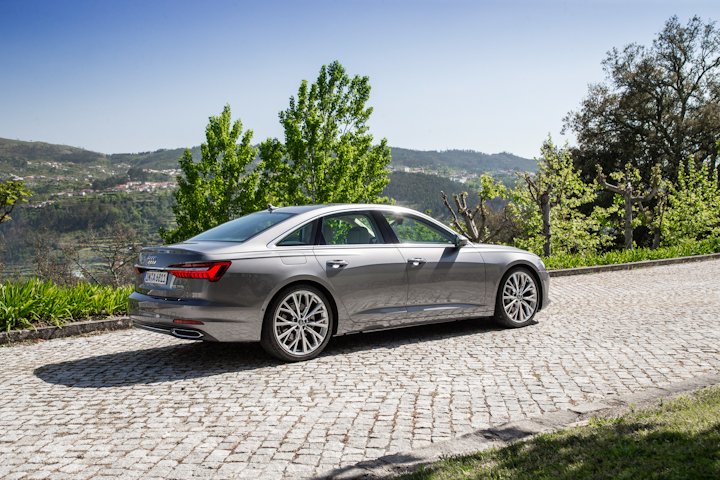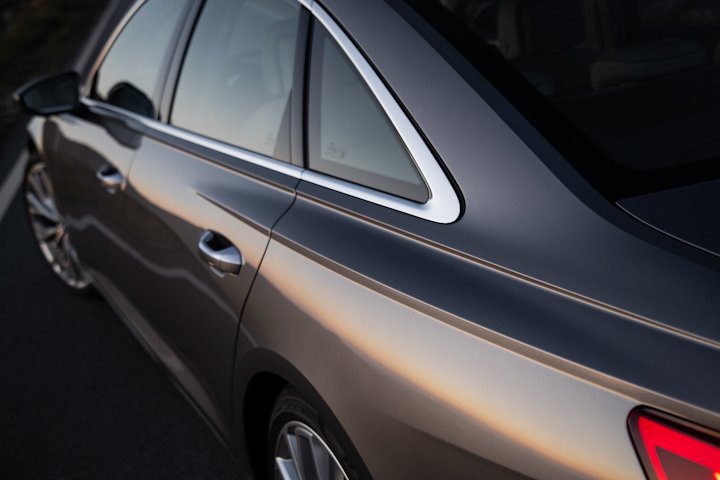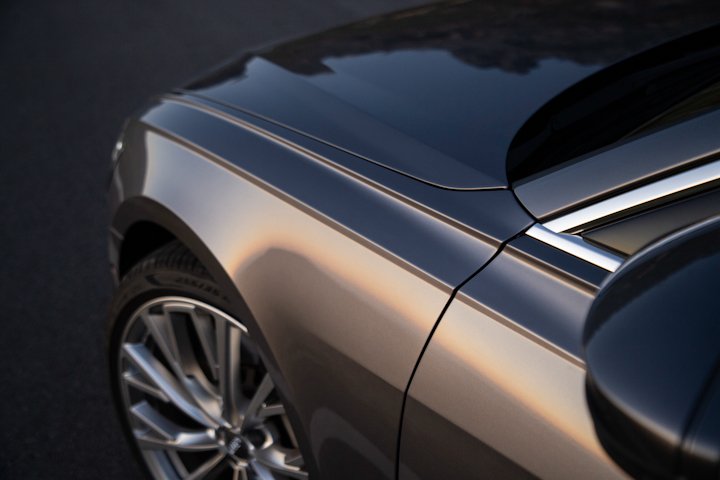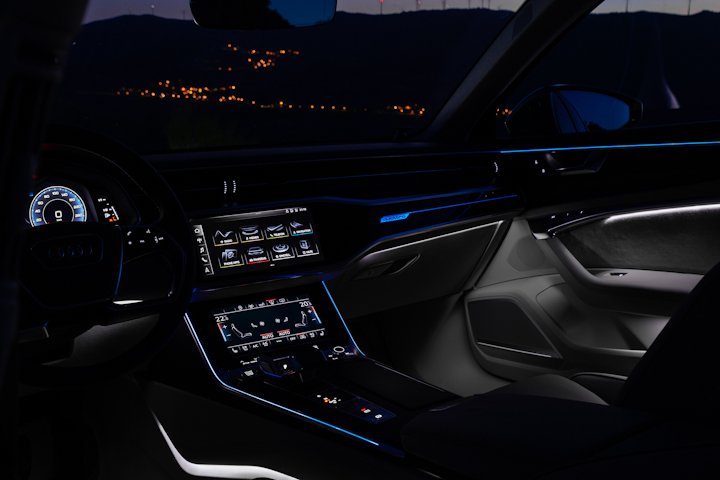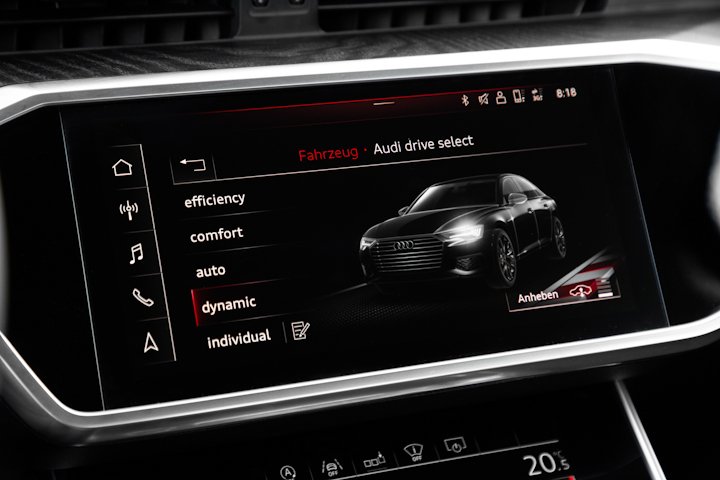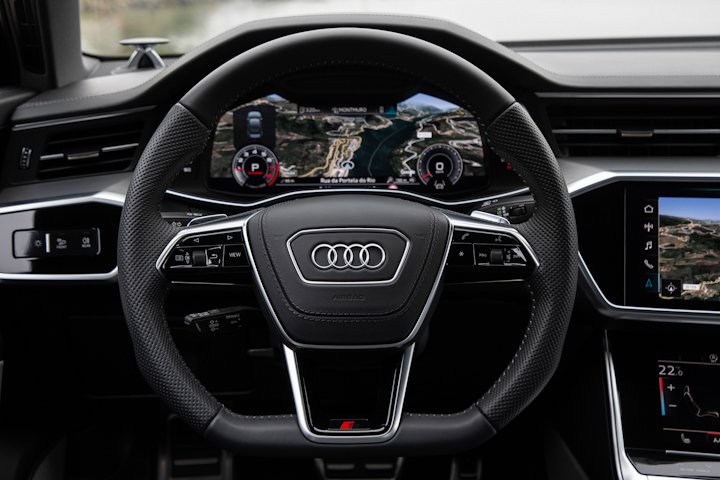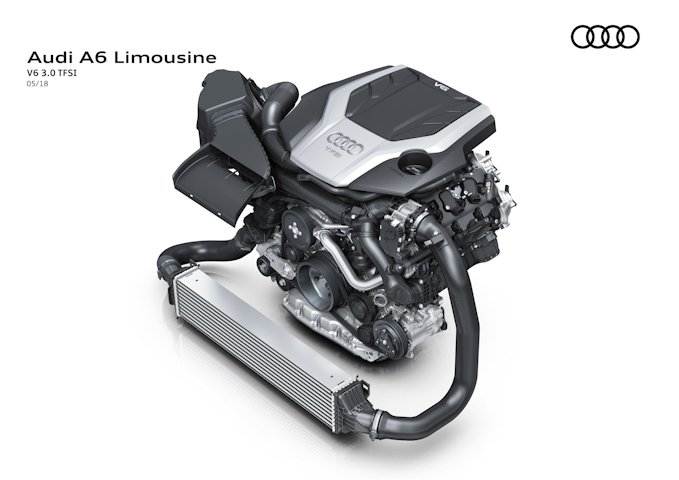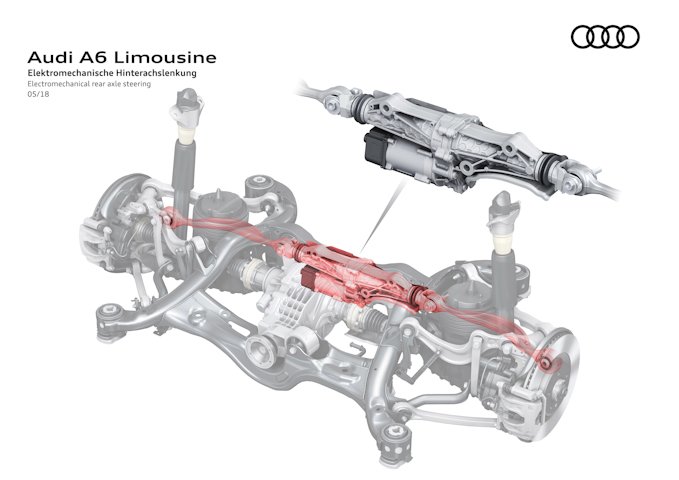
The new Audi A6 is now in Malaysia featuring a new design, improved refinement, new tech and mild-hybrid drivetrain
Audi Malaysia has introduced the eighth-generation Audi A6 full-size saloon with a new look, features and dimensions, as well as a new mild-hybrid drivetrain likewise in the new A8 L flagship. The new saloon retails at RM589,900, fully-imported from Audi’s Neckarsulm plant in Germany.
Besides boasting Audi’s new design language, the new eighth-generation Audi A6 has grown bigger; it’s now 4,939 millimetres long – 7 millimetres longer than its predecessor. 12 millimetres wider (1,886 millimetres) and height at 1,457 millimetres – 2 millimetres more than on the outgoing model.
Illuminating the path ahead
As a standard feature for the Malaysian market, the Audi A6 comes with HD Matrix LED headlights. The lighting system features five horizontal lines form the daytime running light signature as with all new Audi models. The lighting signature of the taillights is made up of a single horizontal line and nine vertical segments for each unit; the brake light fills the areas in between. For the interior, the ambient lighting offers 30 different colours.
Inside the Audi A6
The interior of the new Audi A6 features a black-panel design creating “a relaxed lounge atmosphere”. The centre console in the new Audi A6 is directed at the driver; the top MMI touch response display is also tilted slightly to the right. With its black-panel look, it almost disappears into an aluminium clip when switched off. The display is activated when opening a door; its graphical user interface appears reduced, matching the interior design.
MMI touch response operating system
The MMI touch response system of the new Audi A6 features personalisation options that can be tailored to the driver: The all-digital operating system allows central vehicle functions to be placed in the required position in the MMI screen using drag-and-drop – similar to the user experience with smartphone apps. While shortcuts and favourites, buttons allow ease-of-use.
Up to seven drivers can store their preferred settings in individual user profiles with 400 customisable parameters. Likewise, the configurable favourites buttons help tailor the system to the user’s preferences.
Much like the systems in rival manufacturers such as Mercedes-Benz and BMW, the MMI system features natural-language control, processing questions and commands with onboard stored data and in conjunction with MMI navigation plus. The MMI touch response operating system features haptic and acoustic feedback where users can hear and feel a click as confirmation as soon as their finger triggers a function.
The centre stack houses two digital displays; the top 10.1-inch screen diagonal for MMI navigation plus and infotainment functions. The bottom 8.6-inch display, located in the console in the centre tunnel, is used for the climate control and for the convenience functions and text input. In addition, the head-up display projects important information onto the windshield. The MMI navigation plus also includes the fully-digital instrument cluster 12.3-inch Audi virtual cockpit.
Featured as standard for the Malaysian market is the top-of-the-line MMI navigation plus. The data transfer module uses the new LTE Advanced standard. MMI navigation plus also offers a host of new navigation features. These include a self-learning function based on the driven routes, which generates intelligent search suggestions.
Changes in dimensions
The body of the new Audi A6 sees improved refinement due to changes made in four areas: improved aeroacoustics reduces wind noise at high speeds, heightened body rigidity thanks to a new mix of steel and aluminium in the body shell. Components such as the front suspension strut dome are made of aluminium, as are the doors, hood, boot lids and fenders.
Reflecting the increased dimensions, the interior of the new Audi A6 is now bigger than on the outgoing model. The luggage compartment offers more loading width – two golf bags can be accommodated horizontally. The boot capacity remains unchanged at 530 litres. Now with large glass sections, the panoramic glass sunroof allows more light inside.
Suspension and handling
The new Audi A6 features dynamic all-wheel steering. Depending on the travelling speed, the steering ratio varies between 9.5:1 and 16.5:1 thanks to a strain wave gearing at the front. At the rear axle, a spindle drive turns the wheels as much as 5 degrees. At low speeds, the wheels steer in the opposite direction to the front wheels, reducing its turning circle by up to one meters to 11.1 meters.
At high speed the wheels turn in the same direction, thus optimising stability when travelling in a straight line or changing lanes. Audi says that passengers also enjoy more comfort since the steering movements seem much softer on the rear seats.
The revised suspension is also made out of lightweight aluminium, likewise, brakes with fixed callipers made from aluminium are fitted to the front axle. Audi Malaysia says that the Audi A6 has improved ride and noise comfort over its predecessor despite having fitted with 20-inch wheels all-round.
Drivetrain
Audi Malaysia is launching the Audi A6 exclusively with the 3.0 TFSI engine. Also fitted in the A8 L flagship saloon, the 2,995 cc TFSI twin-scroll turbo V6 engine which makes 340 hp at 5,000-6,000 rpm and 500 Nm of torque at 1,370-4,500 rpm. The 3.0 TFSI is coupled as standard with a seven-speed S tronic automatic gearbox with the rear-biased quattro all-wheel-drive system. The drivetrain takes the A6 from 0 to 100 km/h in 5.1 seconds with an electronically limited top speed of 250 km/h.
The 3.0 TFSI engine comes with Audi’s new mild-hybrid technology featuring an alternator starter (BAS) working in conjunction with a lithium-ion battery. The Audi A6 can coast between 55 and 160 km/h, while the start-stop function starts up to 22 km/h.
Also, the front sensors trigger engine restarts as soon as the vehicle in front starts moving. During deceleration, the BAS recovers up to 12 kW of energy. In real-world driving, Audi says, that the MHEV technology reduces fuel consumption by up to 0.7 litres per 100 kilometres.

